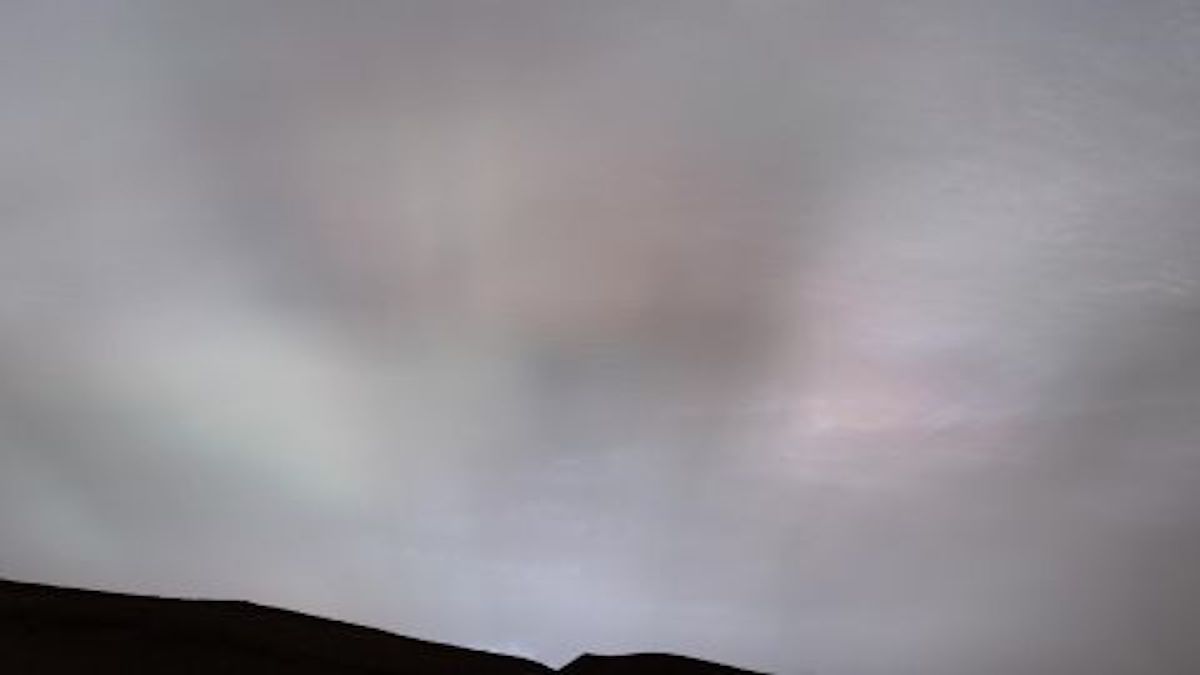(CNN) — The Curiosity rover has revealed a stunning postcard view of a spectacular sunset on Mars.
NASA’s rover has been traveling the surface of Mars for more than 10 years, searching for answers as to why the red planet went from hot and humid to a frozen desert. He discovers intriguing rock formations, searches for signs of life, and climbs Mount sharp in Gale Crater Center.
But instead of constantly focusing on the endless red rocks and dirt below its wheels, the rover has recently been looking up.
The Curiosity rover captured these “sunbeams” shining through clouds during sunset on Mars on February 2.
On February 2, Curiosity saw streaks of sunlight stretching across the horizon, illuminating a cloud bank as the sun set on Mars. This is the first time that rays, known as crepuscular rays, have been seen so clearly on the Red Planet.
The rover is following up on its previous observations by studying twilight clouds on Mars. Glowing clouds at night. In 2021, Curiosity will use its black-and-white navigation cameras to monitor those cloud structures as it passes by Mars.
Clouds provide a deeper insight into weather patterns and conditions. Scientists can use information about when and where clouds form on Mars to learn more about Mars’ atmospheric composition and temperature and wind.
The new survey, which will begin in January and end later this month, will use the rover’s color camera on its mast to watch cloud particles grow.
On Mars, most clouds are composed of frozen ice and float about 37 miles (60 kilometers) above the ground. But Curiosity found the clouds in the new photo reaching high altitudes, which researchers believe are made of frozen carbon dioxide ice or dry ice. Scientists are still studying to find out why this happens.
The Curiosity rover captured this iridescent plum-shaped cloud just after sunset on January 27. NASA/JPL-Caltech/MSSS
Curiosity captured a separate image of bright, iridescent plume-like clouds on January 27.
“Where we see iridescence, it means that the particle sizes of a cloud are the same in every part of the cloud as its neighbors,” said Mark Lemon, an atmospheric scientist at the Space Science Institute in Boulder, Colorado. “By looking at the color changes, we see the size of the particles in the cloud change. This tells us how the cloud formed and how its particles change size over time.”


:quality(85)/cloudfront-us-east-1.images.arcpublishing.com/infobae/SMPW7M5BQFERBOQUPJXKCOKARY.jpg)
:quality(85)/cloudfront-us-east-1.images.arcpublishing.com/infobae/NP5NEZXMZFGNLBHNEQJHPJVMKM.jpg)

:quality(85)/cloudfront-us-east-1.images.arcpublishing.com/infobae/X7DZAL3I4REJTKPZ4Y4DYBHFMI.jpg)